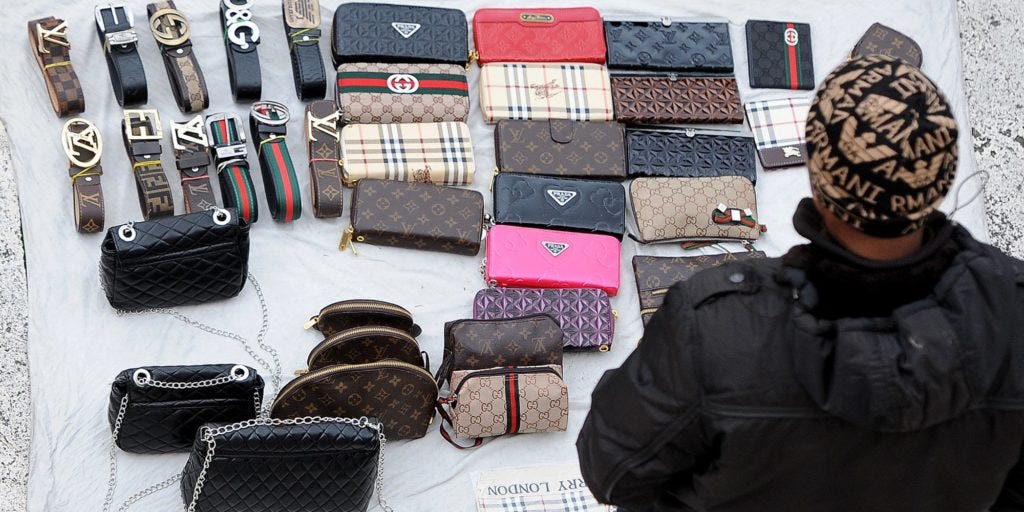Fighting Fakes — A Lost Cause?

The counterfeit trade is booming with nearly half a trillion dollars in fake good sold each year -the equivalent of the global economic output of Austria or the combined GDP of Ireland and the Czech Republic, or 2.5% of global imports, compared with total imports in world trade of USD 17.9 trillion. Despite various initiatives started by brands, governments and Chinese tycoons themselves (Alibaba) to tackle the problem, the numbers are on the raise.
US, Italian and French brands are the biggest victims and some of the proceeds go to organised crime, according to a new report by the OECD and the EU’s Intellectual Property Office. Up to 5% of goods imported into the European Union are fakes.
It’s no surprise now that most counterfeits originate in middle income or emerging countries, with China being the top producer.

Is It A Big Deal?
Currently governments lose vast amounts of money in counterfeit products prevention. Fakes are usually discovered and seized only on the boarders/customs, however at this stage is already too late. A customer made a purchase (sometimes buying counterfeit goods unconsciously) and as result that money is lost — it didn’t go to brand’s owner and no taxes have been collected.
Fake products are everything from handbags and perfumes to machine parts and chemicals. Footwear and attire are the most-copied items, though trademarks are infringed even foods — strawberries and bananas taking the lead.
According to OECD 2017 report, top categories of detained articles at the external borders in 2015 were cigarettes, which accounted for 27% of the overall amount of detained articles, followed by other goods (10%), toys (9%), labels, tags and stickers (8%) and foodstuffs (7%). These percentages are by unit volume however, and by caseload the leading results were sports shoes (17%), bags/watches/purses (15%) and clothing (14%). By value, watches prevailed (24%), followed by wallets/purses (9%) and clothing (7%).
Counterfeiting also produces knockoffs that endanger lives — auto parts that fail, pharmaceuticals that make people sick, toys that harm children, UV sunglasses without UV applied, baby formula that provides no nourishment and medical instruments that deliver false readings.
Last Christmas I Gave You… A Fake Harry Potter Wand
Aftershave, cuddly toys, trainers, scarves and Harry Potter wands were among items seized by the Border Force in the weeks before Christmas of 2017. More than 83,000 items were confiscated at airports in a single operation across six days earlier this month. Other recent seizures at UK ports and hubs, with an estimated value of more than £1m, included: 900 fake Burberry scarves; 100 Harry Potter wands and 3,000 counterfeit Pokémon, Nintendo and Minecraft cuddly toys; 137 fake Louis Vuitton handbags; 300 fake Sony PlayStation PS3 controllers; and 941 pairs of fake Nike Air Max trainers.
But that’s a drop in the sea of the counterfeit products smuggled everyday through the borders globally. In 2017 Border Force at Heathrow’s Airport seized only £150 million worth counterfeit products. If you compare it with $462 billion (£270 billion) (remember that this number is now much higher as the last data comes from 2013), that represents a very tiny success rate. The reason being is partly due to grey market and bribery amongst authorities, (obvious reasons numbers of the scale of this are not available. Most of all, that shows that current detection methods are not working.
The Hope: Emerging Tech
With the newest emerging tech, we believe the potential of blockchain technology and smart tagging can improve anti-counterfeit measures in different industries and have a significant positive social impact. How? By linking digital certificates to purchased goods on a wide scale, we will be able to provide a much higher degree of confidence to retailers and buyers, especially when purchasing online. This is not a large concern when purchasing from known high-street stores, but it becomes a huge issue when consumers are looking to purchase new or second-hand items off online marketplaces. It also makes job easier for customs to identify supply chain path and verify financial data against securely recorded digital traces.
Smart tagging will provide consumers with a better brand experience, and a higher degree of confidence in the items they are buying. By combining blockchain technology and smart tags or encrypted chips, undetectable forgery becomes impossible, and wearing fakes becomes socially risky.
Counterfeiters might always have a new trick, but at Tracemarq we believe blockchain technology will now be efficiently one step ahead of the grey market players.
To follow our progress, sign up to our newsletter and follow our social media.
